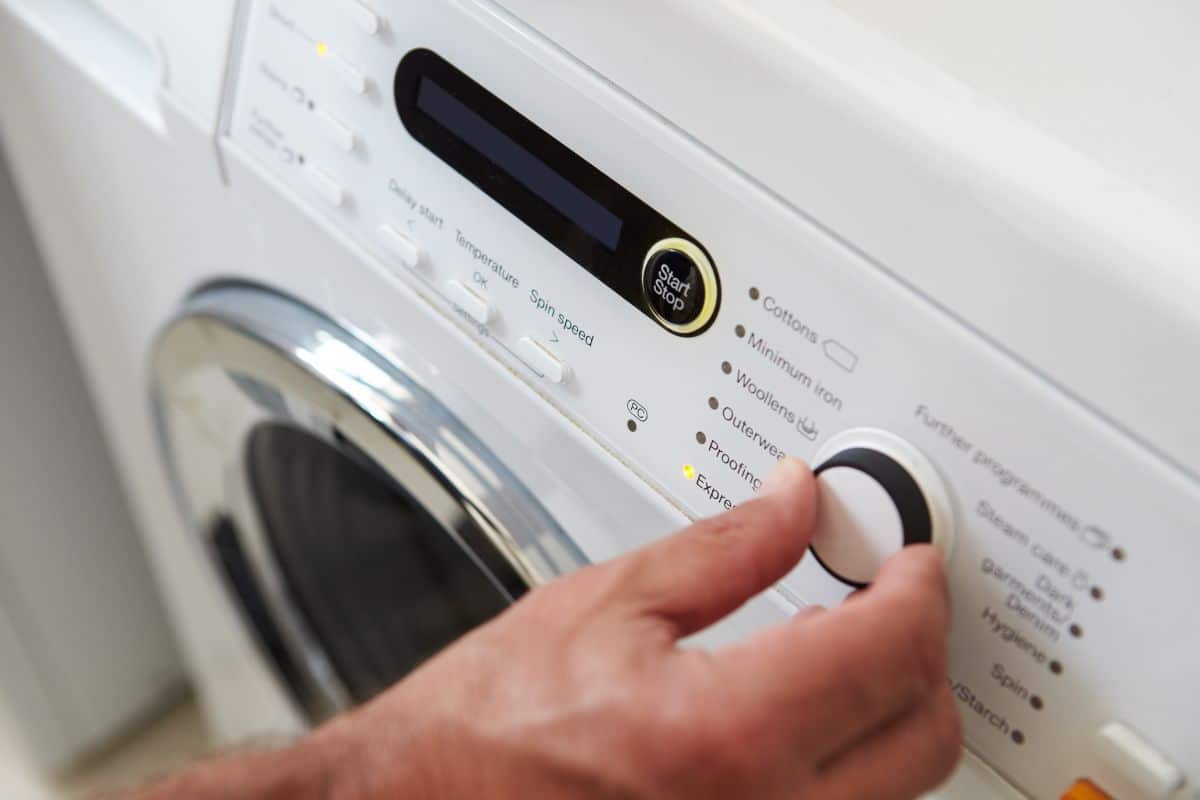The allure of the quick wash cycle on your washing machine is undeniable. With our busy schedules and endless to-do lists, saving time on household chores seems like a smart decision. However, this convenient option might be causing more harm than good. Let’s explore why the rapid cycle might be secretly sabotaging your clothes, your machine, and even your utility bills.
The hidden costs of quick wash programs
When we’re rushing to complete our chores, the quick wash cycle appears to be our best ally. However, this time-saving feature comes with several significant drawbacks that many people overlook. Quick wash cycles often require more energy to complete their tasks in shortened timeframes, contradicting the common assumption that shorter cycles consume less power.
The washing machine must heat water rapidly and operate its motor at higher intensities to achieve the same cleaning results in less time. This increased power demand translates directly to higher electricity bills over time. Similar to how energy-efficient cooking appliances can reduce consumption, choosing the appropriate washing cycle can have a significant impact on your home‘s energy usage.
Additionally, the financial impact extends beyond your monthly utility bills. The aggressive mechanical action of quick cycles puts excessive strain on your washing machine’s components, potentially reducing its operational lifespan. The motor, pump, and drum bearings work harder during rapid cycles, accelerating wear and tear that might lead to costly repairs or premature replacement.
Consider these hidden expenses of quick wash programs :
- Higher energy consumption due to intensive water heating
- Increased water usage with less efficient rinsing cycles
- Accelerated wear on washing machine components
- More frequent need for clothing replacement
Impact on fabric quality and garment lifespan
One of the most overlooked consequences of quick wash cycles is their effect on your clothing. Rapid washing programs significantly reduce the lifespan of your garments through various mechanisms that compromise fabric integrity. The shortened cycle doesn’t allow detergent sufficient time to properly dissolve and work on stains, often leaving residue embedded in fibers.
This residual detergent not only causes fabrics to stiffen and lose their natural feel but can also trigger skin irritations and allergic reactions for those with sensitive skin. The problem becomes particularly acute with delicate fabrics like silk, wool, or lace, which require gentler treatment. Improper cleaning of these materials can lead to permanent damage after just a few washes.
The aggressive spinning action typical of quick cycles subjects fabrics to intense mechanical stress. To compensate for shorter wash times, these programs often employ faster spin cycles that pull and stretch fibers beyond their natural resilience. The result is premature wear patterns, stretched necklines, and faded colors that make garments look old before their time.
Just as you would take special care when storing perishable foods properly in your refrigerator, your clothing also deserves appropriate treatment to maintain its quality and longevity. Investing a bit more time in proper washing cycles pays dividends through extended garment life and better appearance.
Cleaning efficiency concerns with rapid cycles
Despite manufacturers’ claims, quick wash programs simply cannot match the cleaning power of standard cycles. The limited duration of rapid cycles significantly impairs their cleaning effectiveness, particularly for heavily soiled items or persistent stains. The physics of cleaning cannot be rushed without compromises.
Standard washing cycles provide crucial soaking time that allows water and detergent to penetrate deep into fabric fibers, dissolving and lifting out embedded dirt and stains. Quick cycles abbreviate this essential process, often resulting in surface-level cleaning only. This shortened interaction between cleaning agents and fabrics leaves deeper grime untouched.
The rinsing phase also suffers during rapid programs. Adequate rinsing requires sufficient water and time to remove all detergent residues from fabrics. When this process is rushed, detergent remains trapped in garments, potentially causing skin irritations similar to how limescale residues can damage bathroom surfaces if not properly removed.
For everyday lightly soiled clothes, a quick wash might occasionally suffice. However, for items like gym clothes, children’s playwear, or kitchen linens that encounter significant soil, oils, or bacteria, standard cycles remain essential. Without proper cleaning, these items can develop unpleasant odors or harbor bacteria even when they appear visually clean.
Smarter alternatives to quick wash cycles
Rather than defaulting to quick wash programs, consider adopting more strategic approaches to laundry management. Planning laundry sessions in advance allows for more efficient use of your machine while still accommodating your busy schedule. By establishing a regular laundry routine, you can avoid the last-minute rush that makes quick cycles seem necessary.
Modern washing machines offer specialized eco-cycles that balance efficiency with effectiveness. Though these cycles often run longer than standard programs, they use less energy by minimizing water heating requirements and optimizing water usage. The energy savings from these programs can be substantial over time, similar to how proper food storage techniques reduce waste and save resources.
For truly time-sensitive situations, consider these practical alternatives :
- Sort laundry by soil level and use quick cycles only for lightly soiled items
- Run smaller, well-sorted loads to improve cleaning efficiency
- Utilize overnight or delayed-start features to have clothes ready when needed
- Pre-treat stubborn stains before washing to reduce dependence on cycle length
Innovative household solutions often emerge from unexpected places. Just as simple household items can solve pest problems, your approach to laundry can combine creativity with efficiency. Balancing time constraints with proper fabric care requires thoughtful planning rather than rushed shortcuts.
By reserving quick cycles for genuine emergencies and embracing more efficient laundry practices, you can extend the life of both your clothing and your washing machine while reducing energy consumption and achieving superior cleaning results.

